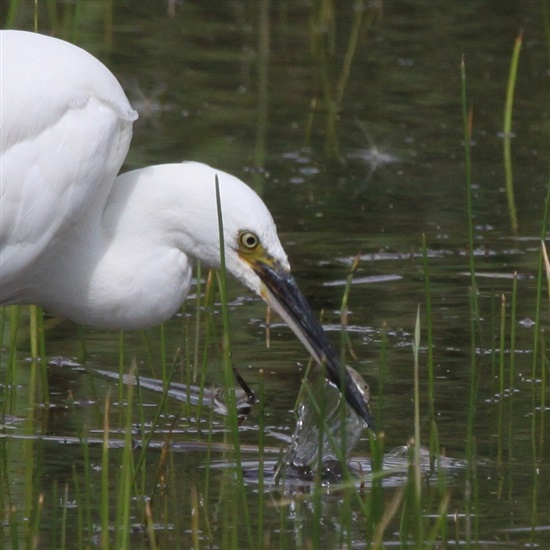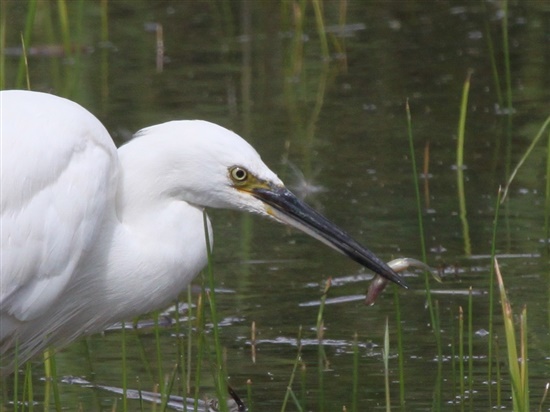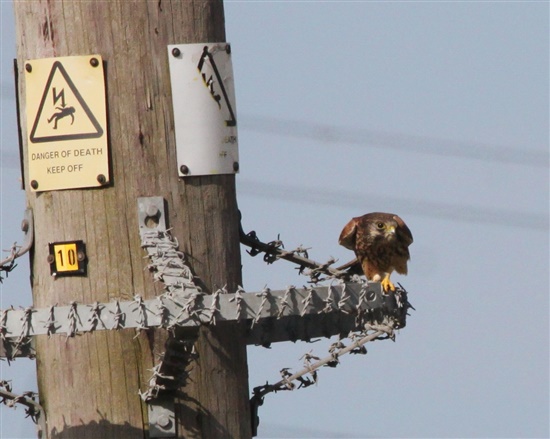There is still a lot of activity with the common terns, with many adults flying with fish in their beaks to feed their young.
The little egrets are busy feeding themselves, and Lockhart caught this one at Wildlife Watchpoint hide yesterday.


A nice, tasty stickleback.
But rodents also have to keep a careful lookout - even read the signs?

These telegraph poles are a good place to see a kestrel looking for a meal…